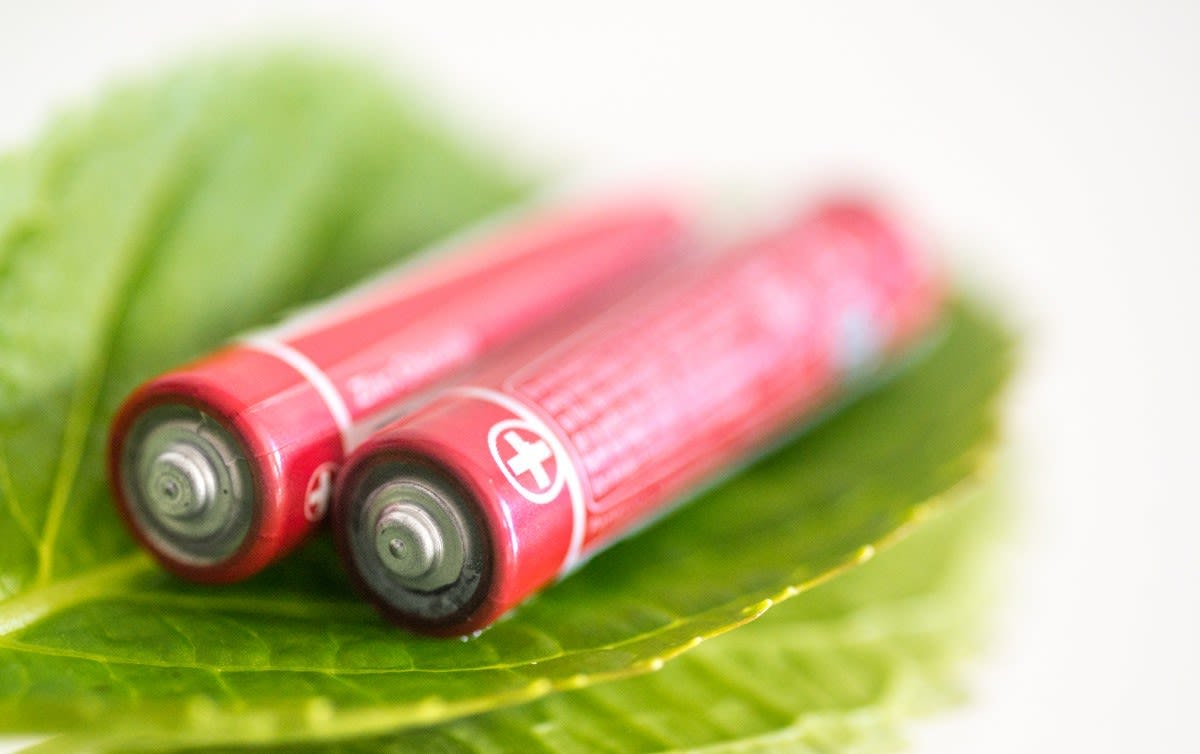Stevens researcher explores the potential of energy storage solutions to improve capacity, reduce costs and protect the environment by leveraging sustainable energy sources
In 2017, the U.S. consumed the energy equivalent of eight billion gallons of gasoline—17 percent of the world’s energy consumption.
Yet more than sixty percent of that energy was wasted according to the U.S. Energy Information Administration. A significant portion of that waste is due to the expense and inefficiency of storing power on energy grids .
Jae Chul Kim is trying to fix that by engineering better batteries.
"The key to reducing energy waste is finding ways to store more energy," says Kim, an assistant professor of materials science at Stevens Institute of Technology. Storing more energy leads to better energy solutions, and those solutions drive innovation.
His goal is to create batteries that store more energy for less money and longer periods of time.
Innovating the chemistry of rechargeable batteries
When most people think of batteries, they think of lithium-ion batteries. Made of lithium and transition metals such as cobalt, nickel and manganese, they are great at storing energy in smaller electronics. But they aren’t perfect: their efficiency has been maximized, they are prohibitively expensive to make and can’t support a power grid.
That’s why researchers like Kim are engineering better batteries by designing new materials.
"We're working to innovate the chemistry of rechargeable batteries," Kim says, "including reducing the cost of battery material by developing systems made of abundant elements that can potentially increase energy density to improve the process of storing energy."
Kim believes that sodium and potassium are better battery options for grid-level storage because they do not require scarce, expensive materials. His research is mostly centered on cathodes (which supply current) and electrolytes (which allow current to flow) with a focus on potassium chemistry. "Alkali metals share similar chemistry, so we can 'cheat' to apply them in existing technology," Kim explains.
Simple as that sounds, potassium systems are challenging to work with. They have fewer cathode materials than their lithium or sodium counterparts, so Kim is designing and testing frameworks that host large potassium ions and promote fast ion transport by using methods based on solid-state and inorganic chemistry.
"It is still a very early stage of development for potassium-ion batteries," he says, "but I hope my research can make a critical contribution to searching for materials suitable for massive-scale energy storage."
And once the technology is up to scale, the adoption of alternative, sustainable fuel sources will be widespread.
"When we have better ways to store energy, we won't have to burn coal to make extra electricity," Kim adds. "We will be able to fully use renewable energy sources, which would not only be cheaper, but would also—and more important—make the environment more sustainable."
Engineering a better solid-state battery
Exciting as those possibilities are, Kim isn’t just interested in engineering more efficient batteries.
He wants to make them safer, too.
"Liquid electrolytes can catch fire if batteries malfunction," Kim says. This has been increasingly relevant due to the increasing occurrence of battery fires in electric vehicles made by manufactures including Tesla, Chevrolet and Toyota. "All major car companies are desperately looking for this technology."
"Lithium-ion battery technology is built on stable interfaces between the liquid electrolyte and electrodes, which were not designed to be stable but happened to be. By going from liquid to solid we can have a non-flammable electrolyte. All-solid-state batteries can ensure ultimate safety, and therefore will be a holy grail for electric vehicles."
"I want to design the very stable interface for the solid system so that we can accelerate the technological development of solid-state batteries." In his research, Kim seeks the optimal point between energy density and long-term safety while optimizing form, function and cost—all at the same time. No research has confirmed how to metal interfaces unreactive without losing energy density and ion mobility.
But that isn’t stopping him.
"Understanding what makes a good interface is one of my career goals."
Taking flight into the future of energy storage
Kim envisions solid-state battery storage that serves both small and large applications, but in a very niche market.
"People want safer and larger capacity batteries in their personal technology," Kim says. "I also see this research being applied to power motors for autonomous electric vehicles, maybe even autonomous electric flight, which is easier because you just take off vertically and go straight."
"As a materials scientist, I think in a materials way, and I'm excited to have established collaborations with chemical engineers who think big and can work to make this technology scalable. I hope that we can improve energy density significantly, reduce energy cost significantly, and make a significant impact on improving sustainability for future generations to come."



